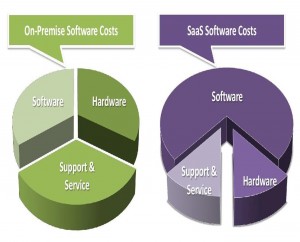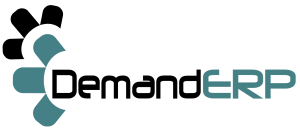 SaaS ERP total cost of ownership becomes more important while considering the ERP SaaS solution for your organization.
SaaS ERP total cost of ownership becomes more important while considering the ERP SaaS solution for your organization.
But still the ERP SaaS or ERP on demand costs are not clear enough; which types of costs are expected? Understanding the type of costs and their effect has a financial aspect and assists manager in deciding which type of solution to choose.
Neglect of Hardware Costs
The beauty about SaaS ERP solution is that the total costs of owner regarding hardware does not exist. When purchasing traditionally the ERP software (on premise) you will probably buy a server that the software and the databank will be hosted on, you will have arrange a room with the appropriate conditions to store it and you will have to hire service for its maintenance.
Although the world today is tending to outsource these services, still most firms invest the money in buying and maintaining a server and it is not cheap. The problem is that you might need to replace the server once every four years (or at least the operating system).
In other words it is not a onetime investment. This expense is continuing. As said at the beginning with SaaS ERP you are not required to purchase hardware because it is all done on line. Try the next resource.
User Fee is the main Total Owner Costs
When purchasing traditionally the ERP software (on premise) you buy the software, the implementation services (the consultants that hang around your organization for several month producing very high invoices) and you purchase the annual licenses. In some cases (like Oracle databank) you will pay for the license to use the databank as well. It may be calculated already in the license fee.
I am not going into figures now because each market or industry behaves differently. With SaaS ERP solution you pay a fee per user periodically; for month, a quarter or for a year.
The user fees for ERP on demand are very changeable; User fee for the big fish like Netsuite may rise up to $400 a month. But on the other hand the market today is flooded with small but effective ERP SaaS software that offer user fee from $10 a month or even for free. Bear in mind that the monthly fee might be based on the number of users.
Type of user
The type of user stipulates the available functions for operating the ERP system. It is equivalent to the management of administrative authorizations of the on premise ERP system – some users are entitled to see and use more modules than other users. It is very logic and helpful; users from the purchase and acquisition do not need to use the finance modules.
Many ERP on demand vendors offer different types of users with different fees. Microsoft Dynamics on demand maintains three type of packages; the starter pack, the extended pack and the full user. Each of them contains other functionalities and will be priced differently.
Storage Fee
Some ERP on demand vendors will price the user fee with accordance to the size of storage required to manage the processes. If you a small business that maintain several tens customer and produce a small amount of movements (order, acquisitions and deliveries) per year – there is no need for you to pay for hundreds of GB storage space.
But if you are producing 30 orders per day – the traffic of information is high and the requirement for storage increases. I admit that today not much consideration is given for this issue but in time, I believe, this will be an important component of the price.
Backups and Restore
The issue of backups is not as obvious as you might think. While considering the ERP SaaS solution I suggest a close examination of the types of backups and restore that are offered with the service.
The big players offer it as a default; this is a part of their reputation. But if you are choosing a local less known ERP on demand solution do some inquiries regarding the backups and find out whether additional costs are required in order to get the full backup and restore service. More information on the subject you may find here.


Comments are closed.